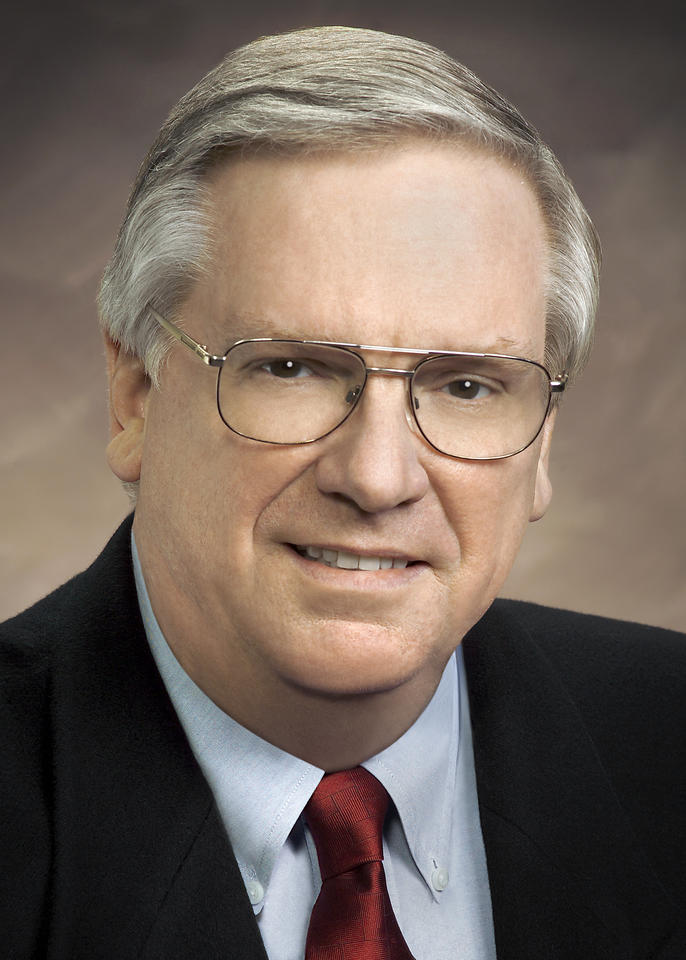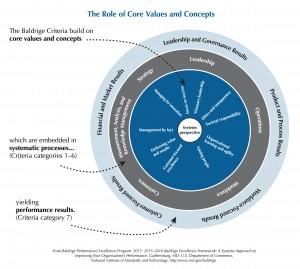Blogrige
The Official Baldrige Blog

Why didn't Sotheby's envision e-bay? Why didn't IBM create the PC operating system? Why did CBS fail to see the value of CNN? Why did GM miss the minivan? Why didn't AT&T invent AOL? And why didn't Kodak come to market with digital photos when it had the technology?
According to Robert "Rusty" Patterson, chairman and CEO of the National Council for Advanced Manufacturing (NACFAM) and an international speaker on topics such as emerging competitive concepts, the shape of industry in the future, and how to position your organization to be a next generation enterprise, many companies that were once household names have been destroyed because they didn't have a common culture that was innovative, creative, forward thinking, and conducive to collaboration that could position them for the future.
"If you want to have long-term sustainability, you’ve got to have a culture that looks to the future, envisions what it could be," said Patterson. Then "bring in outsiders, bring in other people who can help you see what that vision needs to be. Have a common culture throughout your organization so that everyone knows what their roles are, what roles they can play. This fits right in with the Baldrige Core Values and the whole [Baldrige] process. . . . You’re either going to [create this culture] calling it Baldrige, or you’re going to do it calling it something else. . . . [The Baldrige Program] has got the framework; all [organizations have] got to do . . . is use it, and it will work."
The Baldrige Excellence Framework uses a “systems approach,” teaching that organizations can achieve that kind of pervasive culture in part through a systems approach to managing and improving their organizations.
NACFAM is a manufacturing policy think tank that focuses on policy issues related to sustainable manufacturing, workforce development, technology and innovation, and supply chain optimization. Patterson said that NACFAM's mission is to strengthen and support U.S. manufacturing, with value creation and job growth in the sector absolutely essential to a healthy economy.
He said the biggest challenge for small and medium manufacturing enterprises today is being able to innovate quick enough. “It used to be that the drivers [for sustainability] were value delivery and reduction of variation at all costs. We had to have efficiency, productivity, process discipline. Back in the '80s and '90s, we got fairly good at that, but we missed out on the part, I think, that the Baldrige Criteria help with, which is creating a culture that is not just a set a tools to make changes—it’s actually a culture of how you do business and how you work and what you value." He noted that Baldrige has a set of Core

"You’ve got to have innovative, creative thinking because [the market] is moving at such a pace. . . . You’ve got to think outside of the box, but at the same time, you’ve got to have a culture and core values. If you’ve got that, you can introduce new things. And people know how to approach them. They don’t go out and just blindly follow a process. They know how to approach [a process/new idea], analyze it. They know how to put scientific data around it; make sure it’s doing what they want it to do." Collaboration is also critical for businesses today, he said; "your delivery [of products to the market] is just the admission ticket to the competitive environment.
Collaboration and innovation are now the discriminators in that environment. Being able to act like you’re a bigger company because you’ve got partners, you’ve got a network. . . . [Through collaboration with universities, other companies, etc., you can] produce things that separately might take years to do; together they can do it in less [time, with less resources]."
Patterson learned the hard way about the difficulties of not having a common culture and core values through his experience with a large merger in the defense industry. Multiple companies were brought together, but the new workforce had different vantage points. "We were in a situation where we realized we couldn’t even figure out how to go and improve something because we each did [it differently. Eventually] we created a common culture, but it was out of necessity, and it was forced on us."
He added, "I believe most people want to do a good job . . . but if you don't have that common culture then it’s hard to ever pull that off. I’ve done a lot of improvement activities in my career in different facilities where the CEO was detached from what was going on. He would say . . . just go fix that, but those fixes don’t last. . . . You can get some results immediately, but two–three years later, they’re starting to fall off and go away because there’s no supporting mechanism."
Regarding the Baldrige Excellence Framework and its Criteria, Patterson said he has been surprised and pleased at how the Baldrige Criteria "morphed" the way they did, with an increased focus on core values rather than just on process discipline. "It’s not just about how well you execute what you’re doing. It’s about how you create the culture that continues to execute no matter the process. And it’s everything from the CEO to the janitor who understands how to approach issues and problems, understands how to approach their work, and has appreciation for each other’s roles. . . . I was really pleased when I saw that [the Baldrige Criteria have] changed over time and have matured that process and product focus to [an updated framework] that I think has sustainable and long-term, lasting value and can continue to."
Patterson, who worked at Texas Instruments, Inc., in 1992 when it received the Baldrige Award, said he was once part of a focus group for medical professionals who were trying to develop technology for the future. "The medical field was interested in the future of dentistry, but they used a bunch of us who were not dentists to tell them what the future was," to provide an outside perspective.
“What I tell people is you ought to use the Baldrige Criteria to turn a mirror on yourself. You don’t have to win a Baldrige Award. . . . The real key is that you can put that mirror on yourself and get some examiners to come in and evaluate what you’re doing because sometimes it’s hard for you to do this. It’s an excellent criteria [framework that helps you say] you’re doing a lot of the right things, but here are some areas where you can improve.”
Patterson's advice today to manufacturers and other organizations: Stick with early successes, focus on the future, and get a sustainable culture with core values in place.
"Our culture here in the United States is to see a problem and go fix it and make [the product/process] better and better and better," Patterson added. "But we never look up to see if the problem is even still out there. . . . Strategic thinking is key in there. Every year, you have to think what does the future look like. And if that’s what the future looks like, what are the attributes we have to have to succeed in that future. . . . You don’t want to be focused on your market. You want to be focused on the future and what markets are out there and see what parts you can play in them.”
About the author
Related Posts
Comments
- Reply





